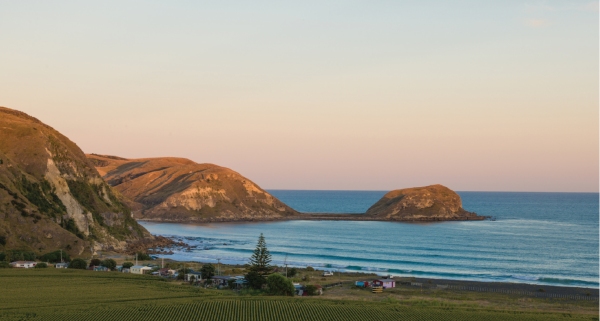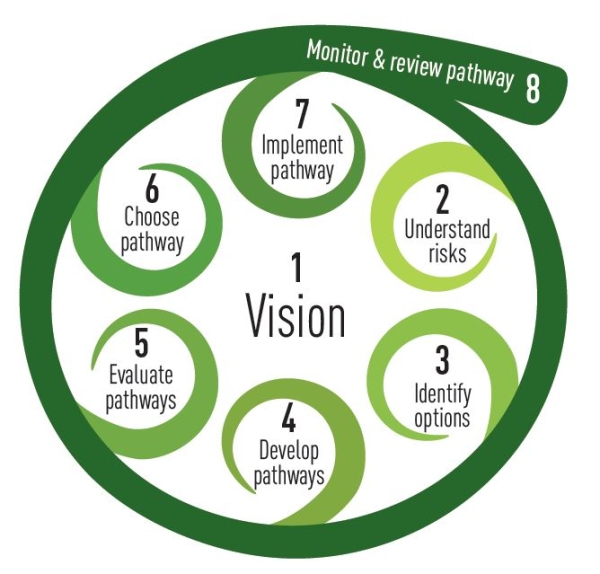Adapting to climate change: A decision-making model for Indigenous Peoples
Te Huringa ki te Rangi is the result of the collaboration between the hapū of Tangoio Marae, Maungaharuru-Tangitū Trust and NIWA.
This decision-making model is transferable and applicable to other Māori, indigenous and coastal communities who are grappling to understand and evaluate climate change impacts and risks, and how to integrate these into development plans that include many and varied objectives. The model is relevant to any complex decision-making process involving competing objectives, uncertainty and the need to adapt to changing circumstances and knowledge.
What could climate change do?
We know that the earth is generally getting warmer. Warmer temperatures will mean many different things including a change in weather. There will be more extremes, heavier rainfalls, hotter summers and more droughts. While we know these trends are occurring and will continue, there is a lot of uncertainty around the impacts of climate change. We don’t know for sure how fast the changes could happen or to what extent they will occur.
Why do we need to adapt?
As cultural and community assets and values are threatened by climate change, more communities will face the unavoidable task of addressing the complexity and uncertainty of climate change.
How might we adapt?
There is no silver bullet, no single solution. Every community’s situation will be different and require different responses. Any decision or strategy on how to adapt to the challenges created by a changing climate and changing hazards requires a conversation involving many parties based on multiple types of information and knowledge.
Overview of the model
Te Huringa ki te Rangi is a decision-making model to support indigenous and coastal communities who are grappling to understand and evaluate climate change impacts and risks, and how to integrate these into their development plans for the future. [PDF 2.4MB]
Step 1: Clarify vision and objectives
At the core of the decision-making process is a vision and set of objectives to guide the journey and outcomes. [PDF 2.8MB]
Step 2: Understand risks
To identify, develop and choose appropriate pathways we must understand the nature, extent and impact of past, present and future risks. [PDF 1.8MB]
Step 3: Identify options
Identify options that achieve community objectives including options to reduce or avoid present and future climate change risks. [PDF 3.6MB]
Step 4: Develop potential pathways
Sequence options to develop possible pathways. Consider to what degree the different choices will achieve (or not achieve) the vision and objectives as well as the impacts of those choices. This stage requires some difficult conversations. [PDF 2.4MB]
Step 5: Evaluate pathways
When different pathways have been developed, consider a reduced list of possible pathways and evaluate them further to support decision-making and action. [PDF 1MB]
Step 6: Choose pathway
A good pathway will be staged, flexible and robust for a range of possible futures. Once the possible pathways have been evaluated it is decision-making time. [PDF 3.4MB]
Step 7: Implement
When your preferred pathway is chosen, move forward and take the first step to put it into action. [PDF 2.6MB]









